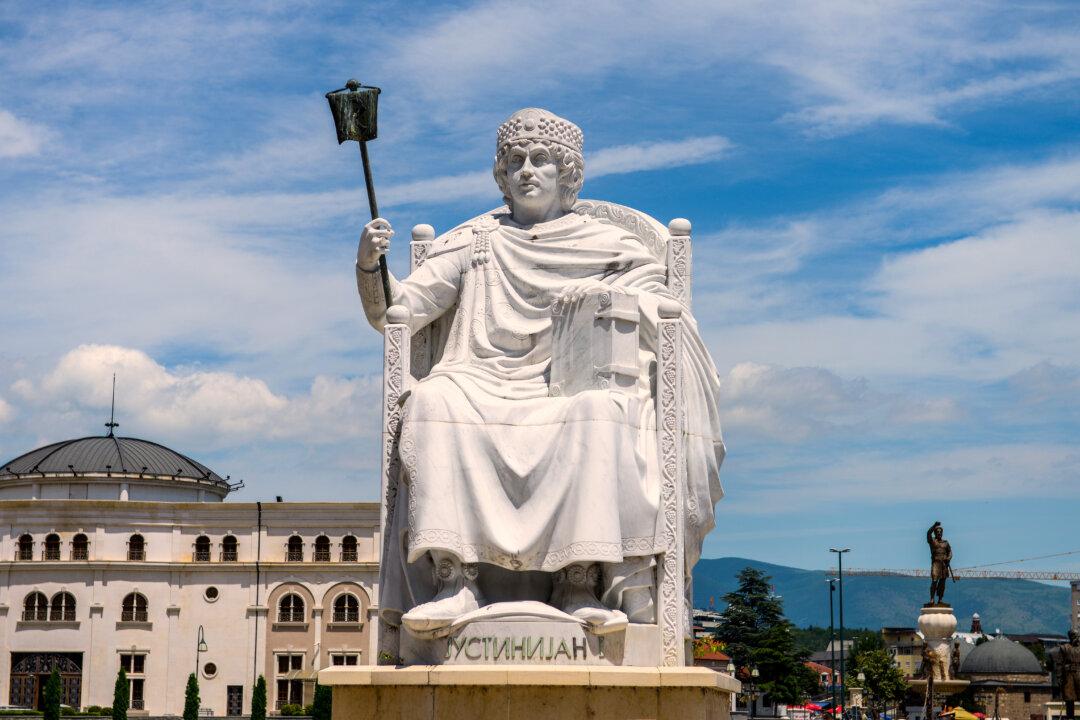Do we live in a civilization?
The mood of the time was captured in the near-universal misunderstanding of Francis Fukuyama’s thesis about the “end of history,” as well as in the Disney cartoon “Aladdin.” Both “Aladdin” and Fukuyama invited us to imagine “a whole new world,” and both did so coincidentally in 1992. Nothing, it seemed, could halt the steady progress of a new age of peace, stability, wealth, and freedom.
But, in the West, so much seems to have gone wrong since that moment.
Disaster in Iraq, Rwanda, and the Balkans should have disturbed western complacency, but didn’t. Neither did the damage done by neoliberal economics, hyper-globalization, outsourcing, and the de-industrialization of the West.
The 1990s also saw the rise of the Taliban, and the following century opened with the destruction of the Buddhas of Bamiyan in Afghanistan and the attacks of 9/11 in America. Since then we seem to have lurched from one crisis to another: warfare and humiliation in the Middle East, the failure to export liberal democracy abroad, financial collapse, terrorism, and latterly the pandemic, supply chain problems, inflation, and renewed warfare in Europe.
All this is to say that the “whole new world” we were promised in the ’90s is much like the old one, only worse. And the theory of irreversible progress seems increasingly implausible in the face of steady decline.
But this doesn’t mean that there’s nothing we can do. Decline isn’t irreversible either. If that were true, then human civilization would never have recovered from its first collapse thousands of years ago. Renewal is possible even after a long interval, as is shown, for example, by the revival of Europe after the collapse of the Roman Empire, or the ebb and flow of civilization in Egypt, Mesopotamia, or China despite repeated foreign conquest. So no matter how bad things may seem, civilization can recover.
But how would we bring about this renewal? The modern answer centres on innovation: doing something revolutionary and starting over again. Most of us now living in the West are used to thinking of practically all aspects of life in the same way that we think of technology. One technological change supersedes another, and each change rapidly ushers in another one. The same process supposedly governs social and moral development. This mode of thought passes without question now. But it would have seemed very disagreeable to a peasant who lived through the French Revolution, a Ukrainian farmer enduring Stalin’s five-year plans, or an indigenous inhabitant of the New World whose life was upended after the arrival of Europeans.
The Western obsession with sweeping away the past is highly peculiar, of course, and it is also highly destructive.
The Western obsession with revolutionary change and novelty grew out of the Age of Discovery, matured throughout the Reformation and Enlightenment, and ossified into an ideology in the early 20th century. The ideological part was the work of Italian poet and art critic Filippo Tommaso Marinetti, whose “Futurist Manifesto” appeared in 1909.
Marinetti urged the total repudiation of the past and the rapid acceleration of technological and social changes. He worshiped the alleged beauty of speed. He hated museums, praised war as a form of hygiene, and wanted to see ancient cities utterly destroyed.
The “Futurist Manifesto” crystallized trends that are still with us. The informal motto of Silicon Valley is “move fast and break things.” Elon Musk, Richard Branson, and Jeff Bezos, for instance, could be considered Futurist prophets of fast cars, trains, rocket ships, high-speed downloads, and near-instantaneous deliveries. Tech companies and CEOs still speak of accelerating change, and the constant action and insomnia favoured by Marinetti are the virtues of the modern office worker.
Futurism could be considered the Mother of All Ideologies. In Italy, the Futurists turned Fascist. They were Bolsheviks in Russia, and Nazis elsewhere. They all agreed with Marinetti’s vision: progress meant repudiating and destroying the past. In the fascist utopia, the state would serve only the strong. Communism would usher in the dictatorship of the proletariat. Nazism reimagined the Marxist class struggle as a conflict among races, and envisioned the end point of history as the thousand-year Reich. These Golden Ages all lay ahead, owing nothing to history. And, as Marinetti seemed to foresee, they would take shape amidst obscene destruction and murder.
Thus the most horrific disasters in human history have a common origin not in the veneration of the past, as some believe, but in utopian visions of the future. So why, we might ask, is future-orientation still such a powerful idea? And if looking to the future is so bad, what should we do instead?
Despite the uncertainties and tensions of contemporary life, and the perception of decline, we should remind ourselves that the future we think we want is never the future we actually get. But, if we want it to, civilization will outlast our failures.






